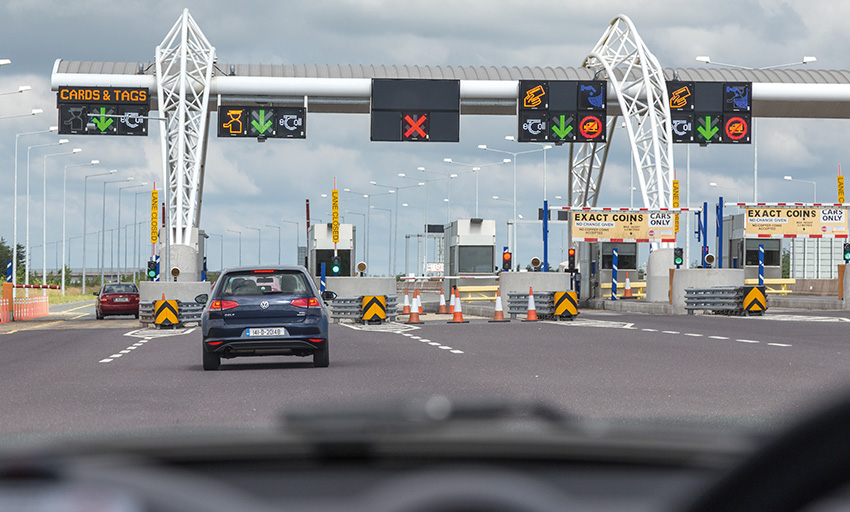TII unveils new transport emissions modelling

Crucial to accurately accounting for emissions reductions as Ireland seeks to reduce transport emissions by 51 per cent by 2030 will be the modelling used, leading to the development of Transport Infrastructure Ireland’s (TII) Road Emissions Model (REM), published in December 2022.
Transport as a sector is a non-point source of air pollution, having contributed 20 per cent of Irish greenhouse gases in 2021. However, complicating matters of the modelling of transport emissions is the fact that emissions and pollutants differ for different fuel types, vehicle types and weight, and vehicle engine size. The speed at which a vehicle travels, as a proportion of the overall distance of a given trip, is used to determine the efficiency of its fuel use and thus the levels of emissions per kilometre travelled.
Further complications in understanding a given vehicle’s emissions arise from the rate at which engine catalyst or diesel particulate filter (DPF) failures occur, as well as differences in emissions when vehicles are operating on congested roads in and around towns and cities when compared to the same vehicles operating on open roads or in free-flow conditions. An example of this can be seen in the statistics for the National Roads Network; 45 per cent of vehicle-kilometres travelled in Ireland annually are on the network, while the emissions resulting from driving on the network makes up roughly 30 per cent of total transport emissions.
Exhaust emissions from vehicles with internal combustion engines also contain a variety of pollutants, most commonly carbon monoxide (CO), carbon dioxide (CO2) and other greenhouse gas, oxides of nitrogen (NOx), nitrogen dioxide (NO2), volatile organic compounds, and very small particulate matter (less than 10 and 2.5 micrometres, known as PM10 and PM2.5, respectively).
As an answer to these multiple concerns, TII “undertakes research on air quality, primarily through a stakeholder alliance with government departments and agencies, academic institutions, and industry partners”, a process through which it says it has “amassed a considerable evidence base and continue to develop tools underpinned by data driven analysis”.

Using the tools at its disposal, TII has formulated the REM, which “provides a spatial and temporal estimate of carbon dioxide equivalent emissions and the pollutant concentrations resulting from vehicular use on the National Roads Network”. The REM integrates four major components:
- traffic information from the TII National Transport Model, which “provides validated estimates of the volumes of light and heavy vehicles, and the speed at which they travel, on the National Roads Network”;
- a fleet mix database that has been developed by researchers at University College Cork, which is based on economic projections and underpinned by Central Statistics Office goods vehicles registration data;
- an emission rate database derived from the European Environment Agency’s COPERT Emissions Tool, which is used as the EU industry standard, with further adjustment using data published by the UK’s Department for Environment, Food and Rural Affairs; and
- an ambient air quality model module that calculates pollutants such as NOx, NO2, PM10, and PM2.5 as they are released from each individual road link using predictions of atmospheric pollutants concentration and dispersion, scaled up to calculate an annual average concentration.
The tool will use appropriate traffic data in order to inform policy through “testing air quality and emissions impacts arising from interventions on the National Road Network and/or the national fleet”. An example proffered by the TII in its report explaining the REM, is one where “the potential impact of modal shift or increased low emission vehicles can be tested on a national or regional basis to help meet climate targets”. TII suggests that the REM could be used as a tool on a local scale to target specific road links for measures such as congestion reduction initiatives. The REM will also provide source apportionment information to determine the contribution of different vehicles to emission estimates.
Among the benefits that TII cites as arising from the use of the REM will be the provision of a “robust and transparent” estimation process that will inform targeted investment in interventions on sections of the National Roads Network, while being able to differentiate the emission effects of vehicles based on type and speed travelled, and the calculation of emissions between individual road links, which should act as an improvement on the previous method, which averaged carbon dioxide equivalent emissions over long distances.
The REM will allow governments and local authorities to monitor and manage the risk the State faces in regard to EU air quality limits and the possibility of exceeding them, specifically with a view to ensuring that new projects do not cause the exceedance of EU standards for ambient air quality. TII also states that the REM can contribute to the Government’s carbon accounting, carbon budgeting, and progress towards emission reduction targets. At the local level, the REM will allow local authorities to “determine the emissions contribution of different vehicle types on individual links, corridors, or regions, e.g., emissions from HGV on specific roads in rural and urban settings and at different speeds”, allowing the authorities to “appraise the emissions change that could be achieved by altering traffic flows or fleet breakdown; e.g., increasing adoption of electric cars”.
The tool, TII notes, can be used with any transport modelling system in order to generate estimates of traffic flows and speed. The REM has been integrated into TII’s national model, with TII encouraging its use for specific schemes using local models.





